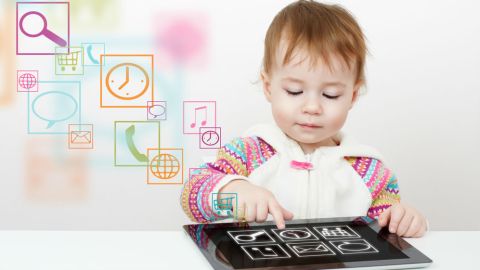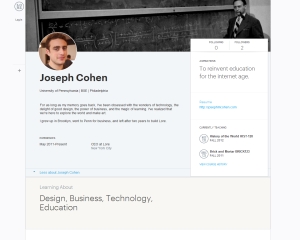How Can We Restore Confidence in Public Schools? Bring Technology into the Classroom.

What’s the Big Idea?
In a blog post from December 2010, Dr. Michio Kaku discussed the perils of our public school system and called into question the schools’ curiosity-crippling methods, which he believes cause intellectual stagnation among our nation’s children.
Dr. Kaku’s sentiments seem to have pervaded the American consciousness. Recently, the Huffington Post reported reported that only 29 percent of recent Gallup Poll respondents expressed “a great deal” or “quite a lot” of confidence in America’s public schools — a record low. The stage is set for the advent of a new education paradigm.
Many people (especially our tech-savvy youth) are quickly becoming aware of the inefficient and cognitively-debilitating nature of our education system and are compensating for these shortcomings by using the web as a supplemental learning tool.
Entrepreneurs have seized the opportunity by creating innovative new education sites. The high demand and low operating costs of the edutech model means that it now poses a great threat to orthodox learning institutions.
All of this begs the question: what distinguishes online learning sites from traditional education? What void are they filling that public schools have failed to address?
What’s the Significance?
The word “educate” is derived from the Latin word “educo,” meaning to educe, to draw out, to develop from within. Therefore, to “educate” is to engage students in their fullness in order to give them a better sense of who they are and the capabilities they possess. Students must be taught how to think instead of what to think. Diversity, rather than conformity, must be embraced in our classrooms so that students can develop the tools they need to be self-actualized adults.
The virtue of contemporary education is that it succeeds in supplying its students with loads of factual information. But this alone is not sufficient for developing truly educated students.
A true education would require parents and teachers to help students form their own ideas and perspectives about the world. To do this, we need to embrace critical thinking and make learning an active and ongoing process. Contemporary education completely neglects this concept. Instead, it relies on a system of rote memorization and regurgitation as a substitute for intellectual development.
The system is void of creativity, collaboration, and autonomy, which, as Dr. Kaku alluded to, are the essential elements of real learning. What public schools need is a tool that appeals to the curiosity and creativity of eager learners; that integrates facts with ideas; and that provides the means for effective collaboration.
Online learning sites provide all three. As a classroom tool, such technology can be used to reverse the learning process by having students independently study lectures online prior to class. This allows class time to be used for peer discussion and practical application of the learned content, which refines students’ understanding and helps them assimilate their knowledge with others’ ideas.
As a supplemental tool, online learning sites can help students connect the knowledge and ideas they formulate in class with those of leading experts and other prominent thinkers, thus exposing them to different perspectives and beliefs. Both methods, when conjoined with contemporary teaching mechanics, function to make students better “educated” in the true essence of the word.
Online learning sites have the ability to instill in children an enthusiasm for learning by providing them the means for personal and intellectual discovery. This is what distinguishes them from contemporary forms of education and what will eventually compel us to integrate them into the classroom.
Image courtesy of Shutterstock/Yuganov Konstantin.





